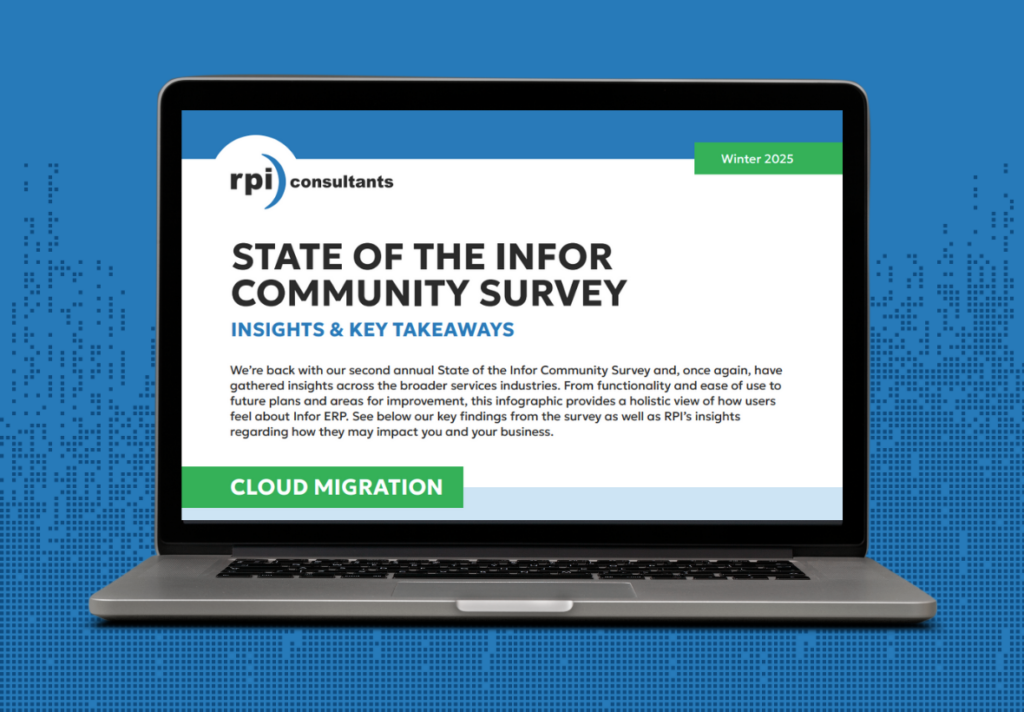Managing accounts payable (AP) processes can be a daunting task for any business, especially when those processes rely on manual data entry. But with the rise of software as a service (SaaS), AP automation has become easier and more accessible than ever.
Accounts payable tools automate the capture, validation, and processing of your invoices to increase ROI, reduce manual effort, free up cash flow, and streamline your business processes.
One of the main advantages of a SaaS solution is that it’s managed by the provider and not internally, which frees your team from worrying about anything software-related, allowing you to focus on your organization’s core business objectives.
Beyond managed software, AP automation delivers rapid results and tangible benefits. Below we discuss nine key AP automation benefits, explore the current AP landscape, and explain why RPI’s Yoga Flexible Software fills the automation gap.
Key AP Automation Benefits
1. Cost savings: SaaS AP automation eliminates the need for staff to manually hard-code invoice data into content management systems, such as printing and mailing sensitive business information, resulting in significant cost savings for businesses.
AP automation also reduces your cost per invoice. In fact, APQC research found that the cost per invoice for top performing organizations is $1.42 per invoice, while businesses with inefficient processes experience costs as high as $6 per invoice. As cost per invoice is a vital KPI, this is one key area where AP automation benefits are rapidly realized.
2. Increased efficiency: Invoices no longer need to sit on your desk or linger in your inbox waiting for review. Automating AP processes dramatically reduces the time and resources needed to manage invoices, balance sheets, and recurring expenses.
And increased efficiency means AP departments can adopt faster, more effective ways of handling invoices and processing payments to vendors. Plus, when you rely partially or solely on manual processes, your ability to balance cash flow with the need to make timely vendor payments can be challenging, which can result in late payment penalties.
3. Improved accuracy: No matter how experienced and skilled your AP team is, any system that relies on manual entry carries an inherent risk of error. Automated data capture helps prevent data entry mistakes, misfiled invoices, and other human errors that can harm your vendor relations.
Intelligent data capture solutions utilize advanced optical character recognition (OCR), AI, and ML technology to automate the extraction, classification, and validation of structured data from unstructured content for document intensive processes like accounts payable and invoice processing. Manual processing also reduces visibility and control across your various processes. That being said, when businesses handle tens of thousands of invoices each month, even a small margin of error can escalate quickly.
4. Customized integrations: AP teams often operate in silos, preventing a coherent and consistent flow of information throughout the organization. Some studies suggest that almost a third of finance professionals named collaboration with non-finance teams as an issue, typically the result of siloed systems.
SaaS AP automation can oftentimes be easily customized and integrated within your existing databases, financial components, and other ERP applications, removing the need to repeatedly enter the same data across different systems. When an AP automated solution integrates with your ERP, it connects to the system and the data associated with it can be easily accessed.
5. Strengthens vendor relationships: Building strong relationships with your vendors and suppliers takes time and effort but can generate significant benefits–notably it can help you capture early payment discounts across targeted suppliers, spend, and invoices. In fact, by using AP automation software, businesses can improve collaboration with their vendors, in addition to managing capital and cash flow with greater ease.
The Institute of Finance Management (IOFM) finds that most organizations capture less than 21% of discounts for early payment of invoices. A mere 12% of organizations don’t collect any discounts.
For instance, a typical early payment discount offered by vendors is ‘‘2/10 net 30 days’’ meaning buyers can secure a 2% discount on their invoice if they pay within 10 days. As highly manual AP teams manage approximately 10,000 invoices per year, per person, automating AP poses a significant opportunity for organizations to bolster vendor relationships, improve processing efficiency, and save on costs.
6. Scalable: Scalable AP software offers the freedom and flexibility to grow and maintain the efficiency of your processes as your business expands and invoice volume increases. Phases of growth and transition are seamlessly managed. As you identify bottlenecks, data insights highlight opportunities for improvement.
7. Greater visibility & collaboration: AP automation provides increased visibility into your AP processing, and subsequently removes reliance on manual, paper-based systems for creating a streamlined system. It delivers a clear view of your invoices and where your payments are being made.
The ability to track your invoices in real-time also provides greater transparency and allows for more informed decision making. Your team can identify potential delays , control spending, and make timely payments.
Further, by removing the pressure of manual data entry and decision making, SaaS AP automation leads to more cohesive and engaged teams. Mundane tasks are streamlined as workflows are consolidated, enabling your AP team to focus on key parts of your process. Collaboration is also improved, which strengthens your workforce.
8. Allows for standardization: Paper based processes and outdated systems lead to more bottlenecks, less efficiency, and unhappy suppliers. AP automation empowers your business to create customized workflows that align with the unique requirements of your business.
9. Ensures compliance: As new technologies evolve, manual processes become increasingly outdated. And outdated systems can lead to errors, delays, and ultimately problems with industry regulations.
In healthcare for example, strict adherence to the HIPAA Privacy Rule is critical, as it establishes protective measures for individual medical records. It also extends to all companies that electronically transmit private health information. This regulation not only ensures patient data protection, but it also sets the framework for companies obligated to provide accurate and timely data.
By adopting AP automation processes, healthcare organizations can strengthen data accuracy and punctuality. That’s because automated AP systems are designed to highlight irregularities, such as incomplete invoices or unexpected changes in vendors’ prices. This ensures that your team pays only for legitimate and correctly documented services, ultimately promoting compliance as well as fiscal responsibility.
The Current Accounts Payable Process Landscape
Research shows that while 9% of AP teams are now fully automated, over half of global AP teams are only partially automated, meaning their systems and processes are inefficient. In addition:
- Over two-thirds of businesses still rely on manual data entry for their invoices
- Over half spend over 10 hours every week processing invoices and payments
Relying on manual processes leads to multiple challenges, including delays in the delivery of goods and services and pressure on your AP team. It also risks jeopardizing relationships with your vendors and suppliers. Your brand reputation is also impacted by late payments. Increased pressure means employees are more susceptible to errors, while repetitive and tedious tasks can leave them disengaged.
Wider concerns exist for businesses too, as the number of corporations with negative cash flow could double in 2023. As mentioned above, AP automation benefits include better management of payment processes and an improved bottom line.
How Yoga Flexible Software Fills the AP Automation Gap
Unfortunately, many enterprise solutions are limited in terms of AP automation. The Infor market, specifically, is still relatively underserved with an AP automation tool that focuses on Infor CloudSuite, especially in the industry verticals where it is most prevalent, such as healthcare and the public sector.
It is within this context that RPI’s Yoga Flexible Software excels. It is both customizable to the needs of your organization and extremely flexible, for instance:
- Yoga is a modern SaaS application designed to automate accounts payable processes. Built using Azure cloud-based technology, Yoga simplifies AP processes by replacing manual tasks with intelligent Optical Character Recognition data validation
- Yoga integrates seamlessly with Infor’s CloudSuite and legacy systems, boasting self-learning invoice extraction compatibility and automated invoice line-item pairing to purchase order line data
- With RPI Consultants’ premium support services, Yoga ensures personalized configuration for your forms, workflows, and integrations. Yoga is as flexible as necessary to fill your ERP gap
Reap the Benefits of AP Automation with Yoga
Investing in AP automation software can deliver multiple long-term benefits to your organization, from increased efficiency and stronger vendor relationships to enhanced cash flow management and more engaged employees. Outdated processes are transformed into highly efficient workflows.
Yoga Flexible Software empowers you to take back control by integrating AP processes with ease, while delivering tangible results to your bottom line.
Automating AP processes is a priority for best-in-class organizations. Contact RPI Consultants today to learn more about how Yoga can work for your business.



